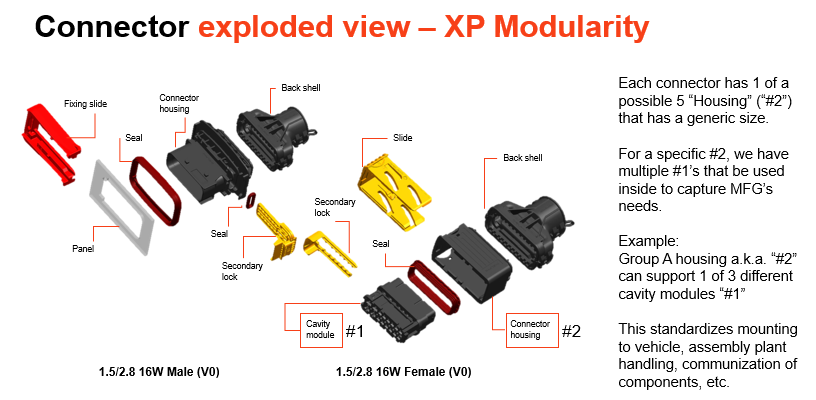Thinking Inside the Box
Connector modularization offers a smart alternative to increasingly complex Commercial Vehicle (CV) design and build processes.
For commercial vehicle OEMs, the economics of vehicle design and manufacture are every bit as demanding as the engineering. To start with, volumes are invariably much lower than those generated by passenger vehicle production. Furthermore, in order to meet the specific needs of different market segments, applications and end users, OEMs are typically required to achieve high levels of flexibility and customization. As a result, there is an ever-present risk of time, complexity and cost being added to the build process.

Electrical and data systems connectors face the challenges of this low volume/high flexibility paradox. For example, adding, removing or changing an electrical module on a standard design will impact connector requirements. If that involves changing an entire part, it will mean a new assembly process, new testing requirements and, quite possibly, a new line on the inventory list.
As OEMs grapple with this continual need to combine quality, customization and efficiency within their manufacturing programs, modularization of connector design represents a new and powerful asset. Modularization will enable the use of single, standard connector shells that can accommodate a variety of different housing and terminal options. Consequently, changing the spec of a vehicle becomes a faster, more straightforward process; one connector shell, robustly validated, establishes a platform for numerous possible outcomes.
Another approach to simplify and streamline manufacturing is to analyze electrical and data systems as a whole, rather than piecemeal. This makes it possible to minimize the number of different connectors needed to complete a vehicle design. Once again, the pay-off is a leaner supply chain, and greater efficiency on the production line.
The challenges – and opportunities – facing CV manufacturers are multiplying fast. Megatrends such as electrification, active safety and autonomous driving are transforming the CV domain, with profound implications for electrical and data system design. Aptiv’s global engineering teams draw on unrivaled expertise and experience, to help our customers stay ahead of the curve. At Aptiv, modularization of connector families, like our new Compact Transportation Connection System (CTCS), is just one of the key innovations that is currently shaping our approach to CV connector design. For OEMs, the significance of these assets should not be underestimated: as complexity increases, so does the value of keeping things simple.
